Abstract
Reaginic antibody synthesis after intraperitoneal immunization with ovalbumin in aluminium hydroxide gel (Al(OH)3) has been evaluated in BN, F344 and ACI inbred strains of rats and compared to that in outbred Wistar rats. Regardless of the dose of antigen employed (0.1 mg, 0.01 mg, 0.001 mg), BN inbred and Wistar outbred rats produced comparable amounts of reaginic antibody 9 days after immunization and these reagins were detectable for at least 70 days. In addition mean serum reagin titres could be boosted by subsequent administration of antigen. There was no statistically significant difference in the response of males as compared to females. The use of Al(OH)3 gel as an adjuvant yielded reaginic antibody titres in these animals that were comparable to those induced with antigen administered with saline extracts of Bordetella pertussis organisms. In contrast ACI inbred rats failed to generate detectable reaginic antibodies when immunized either singly or repetitively with the same doses of antigen in Al(OH)3 gel as used in the BN and Wistar rats. Wistar, BN, and ACI strains produced IgGa-like antibodies after a single immunization; however, peak serum titres were somewhat greater in the Wistar and BN, as compared to the ACI strain. Haemagglutinating antibody titres were comparable and greater than 1:1000 in all the strains studied within 35 days after immunization. These studies have demonstrated another animal model to explore the genetic mechanisms involved in the synthesis of reaginic antibody.
Full text
PDF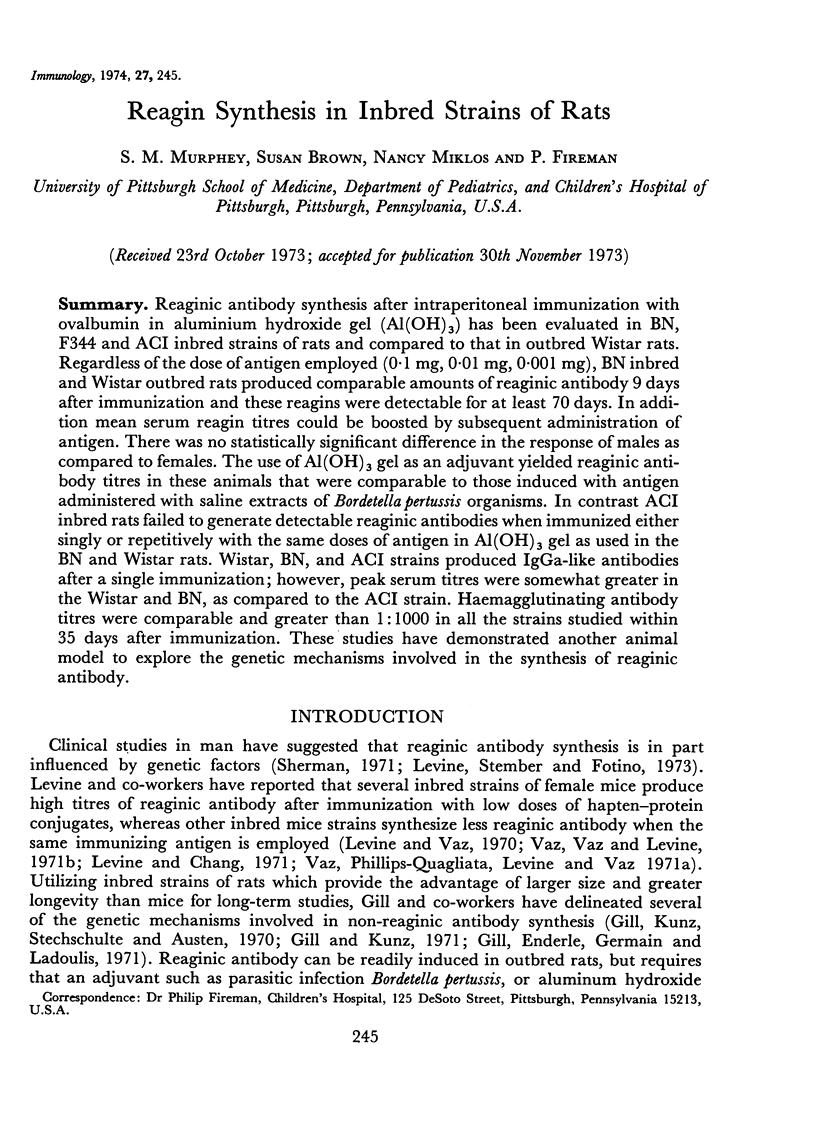
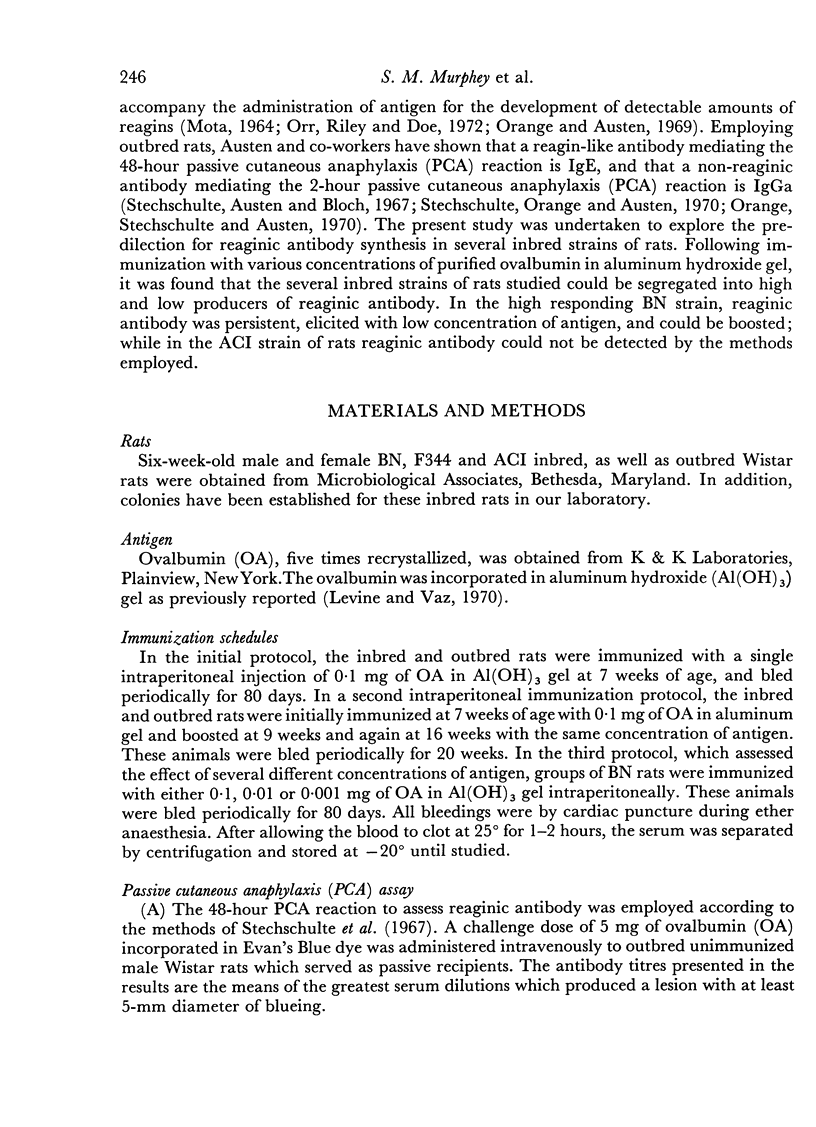
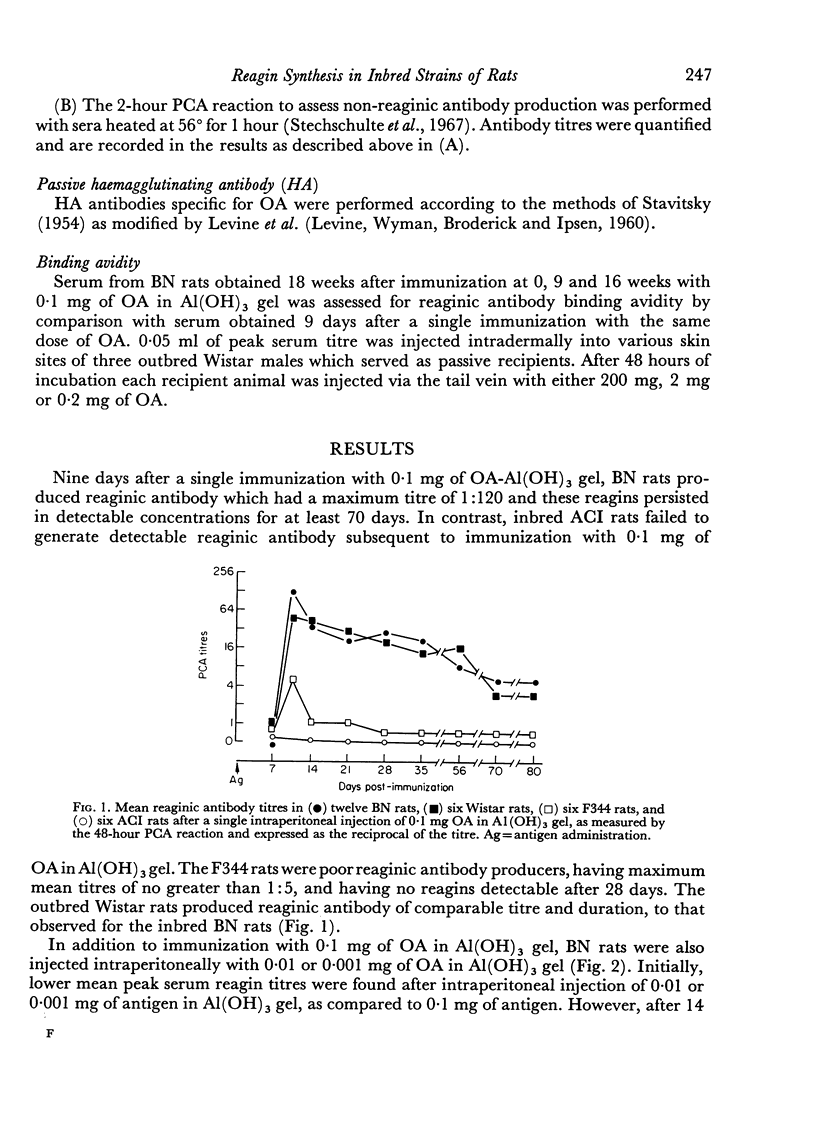
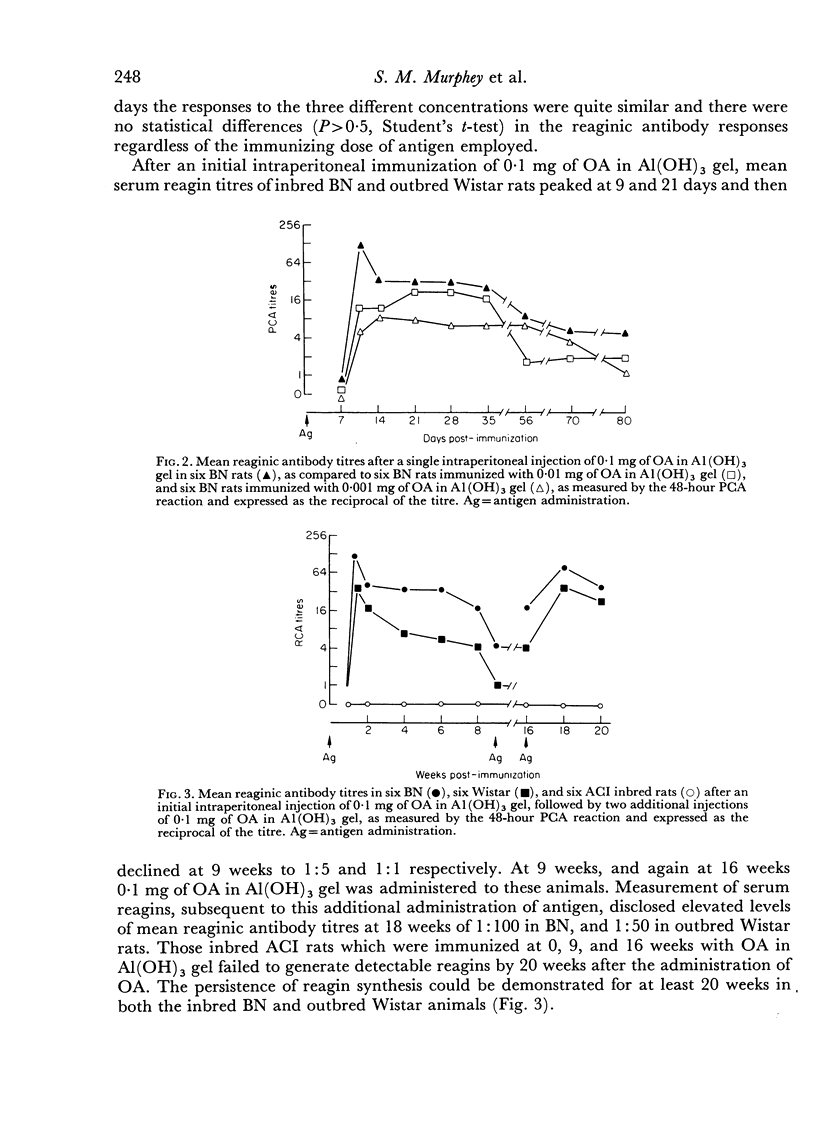
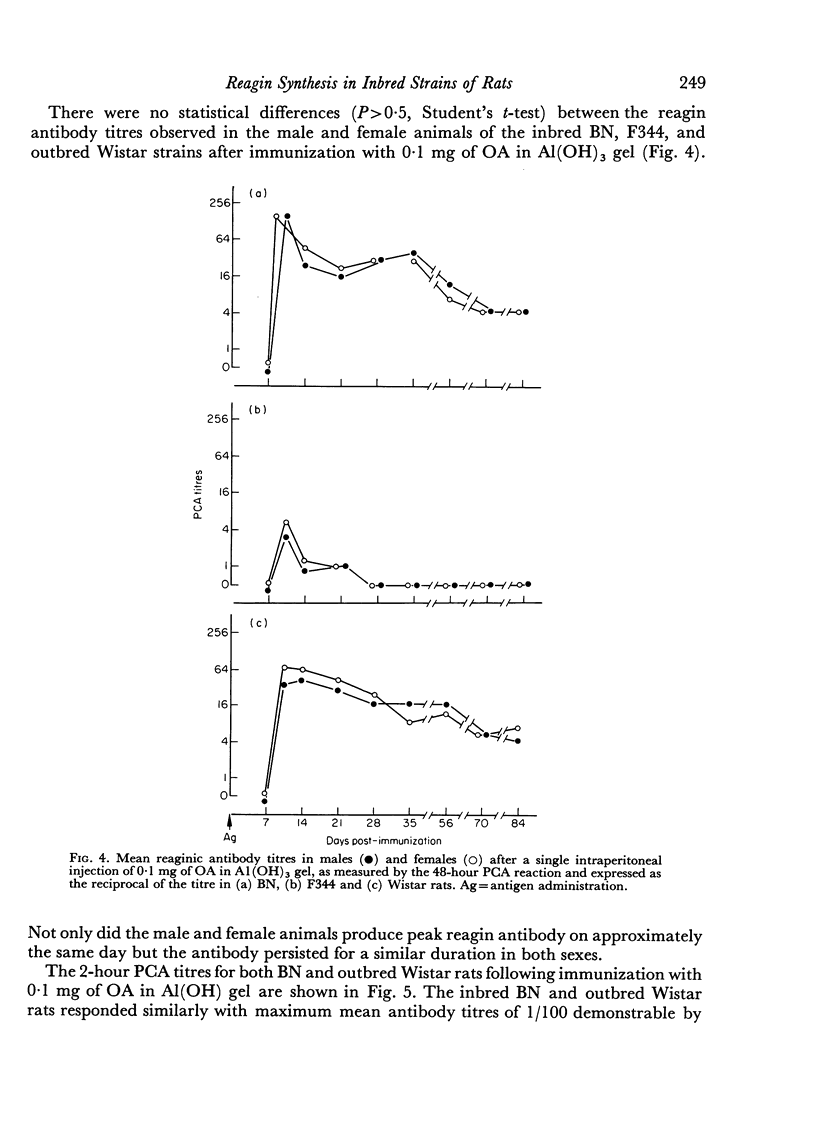
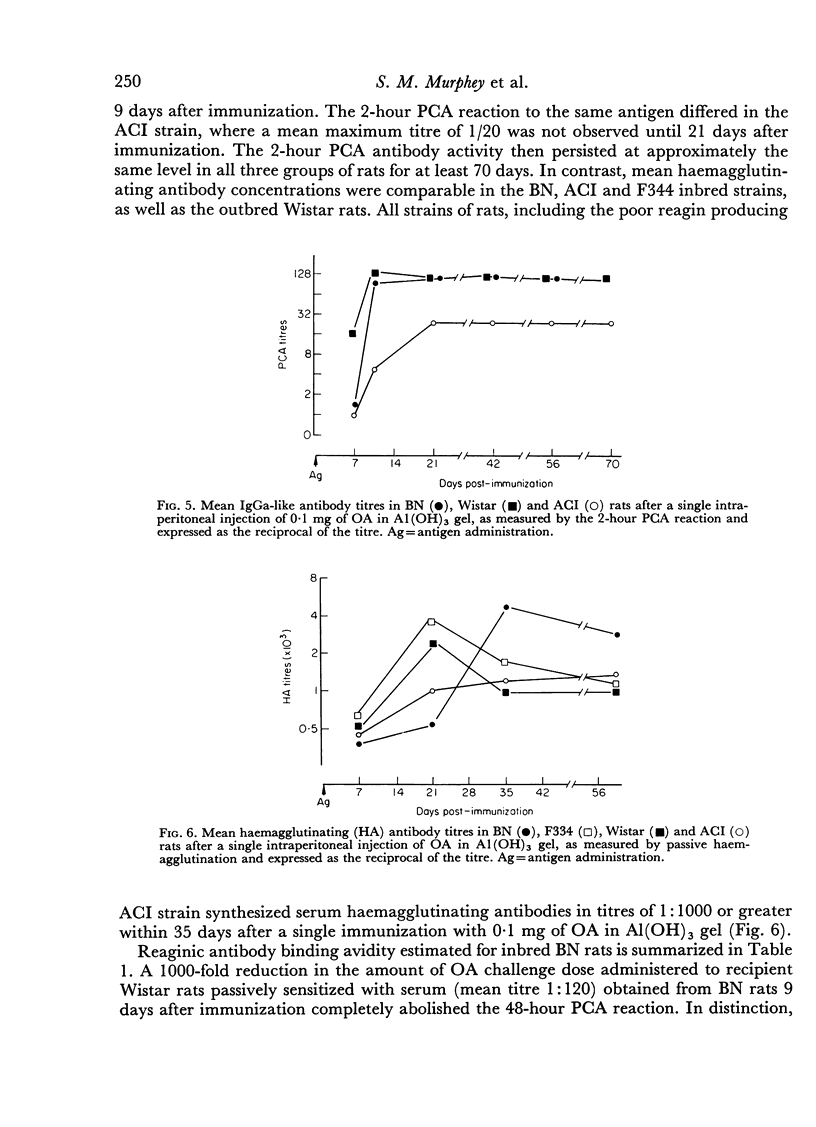
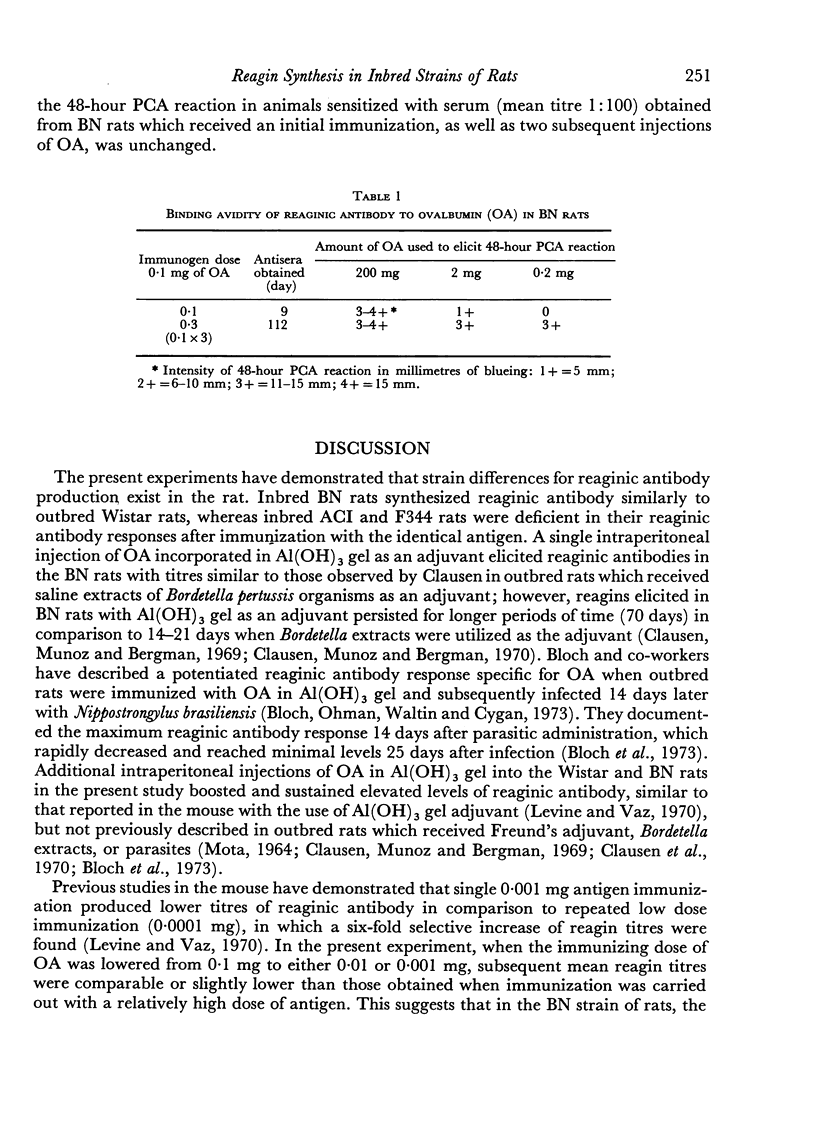
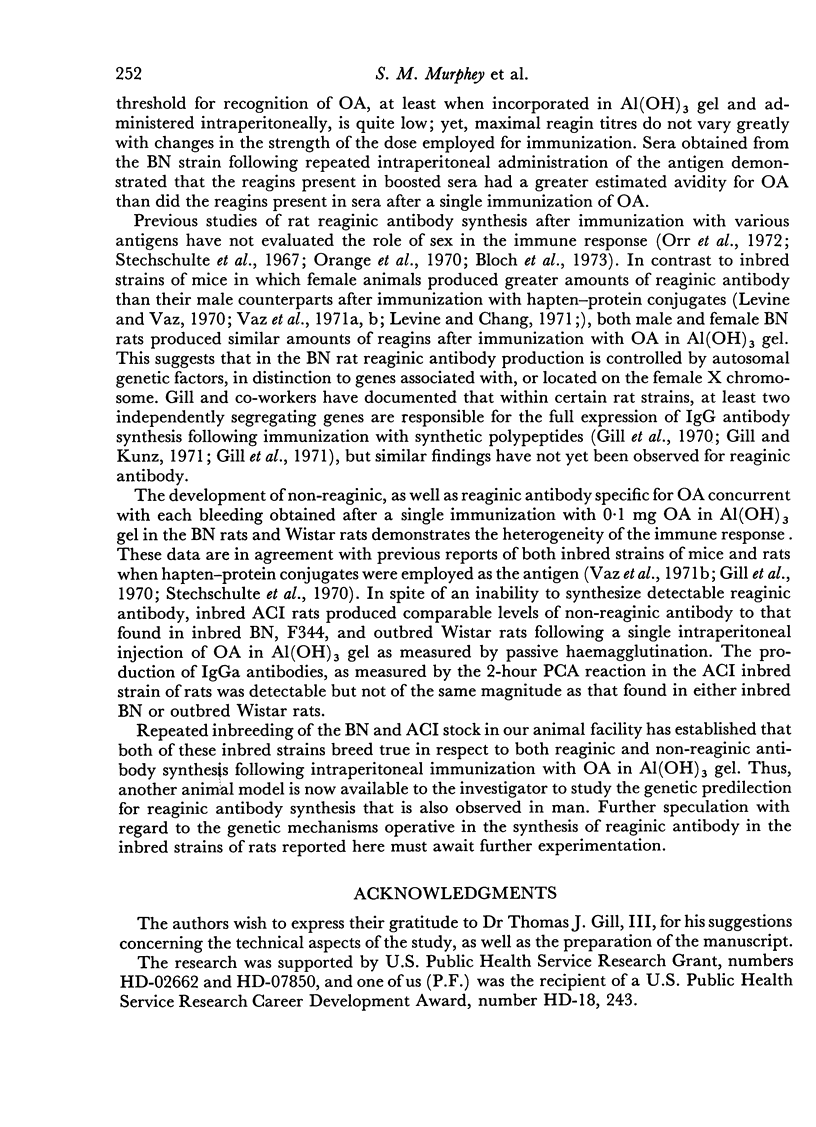

Selected References
These references are in PubMed. This may not be the complete list of references from this article.
- Bloch K. J., Ohman J. L., Jr, Waltin J., Cygan R. W. Potentiated reagin response: initiation with minute doses of antigen and alum followed by infection with Nippostrongylus brasiliensis. J Immunol. 1973 Jan;110(1):197–204. [PubMed] [Google Scholar]
- Clausen C. R., Munoz J., Bergman R. K. A reaginic type of antibody stimulated by extracts of Bordetella pertussis in inbred strains of mice. J Immunol. 1970 Feb;104(2):312–319. [PubMed] [Google Scholar]
- Clausen C. R., Munoz J., Bergman R. K. Reaginic-type of antibody in mice stimulated by extracts of Bordetella pertussis. J Immunol. 1969 Oct;103(4):768–777. [PubMed] [Google Scholar]
- Gill T. J., 3rd, Enderle J., Germain R. N., Ladoulis C. T. Genetic and cellular factors in the immune response. 3. The cellular response to poly(Glu52Lys33Tyr15) in the highly responding ACI and poorly responding F344 strains of inbred rats. J Immunol. 1971 Apr;106(4):1117–1118. [PubMed] [Google Scholar]
- Gill T. J., 3rd, Kunz H. W. Genetic and cellular factors in the immune response. II. Evidence for the polygenic control of the antibody response from further breeding studies and from pedigree analyses. J Immunol. 1971 Apr;106(4):980–992. [PubMed] [Google Scholar]
- Gill T. J., 3rd, Kunz H. W., Stechschulte D. J., Austen K. F. Genetic and cellular factors in the immune response. I. Genetic control of the antibody response to poly Glu52 Lys33 Tyr15 in the inbred rat strains ACI and F344. J Immunol. 1970 Jul;105(1):14–28. [PubMed] [Google Scholar]
- LEVINE L., WYMAN L., BRODERICK E. J., IPSEN J., Jr A field study in triple immunization (diphtheria, pertussis, tetanus). Estimation of 3 antibodies in infant sera from a single heel puncture using agglutination techniques. J Pediatr. 1960 Dec;57:836–843. doi: 10.1016/s0022-3476(60)80134-5. [DOI] [PubMed] [Google Scholar]
- Levine B. B., Chang H., Jr Effect of time interval between antigen injections on reagin and IgG1 antibody titers in low dose immunization in mice. Int Arch Allergy Appl Immunol. 1971;40(1):113–116. doi: 10.1159/000230398. [DOI] [PubMed] [Google Scholar]
- Levine B. B., Vaz N. M. Effect of combinations of inbred strain, antigen, and antigen dose on immune responsiveness and reagin production in the mouse. A potential mouse model for immune aspects of human atopic allergy. Int Arch Allergy Appl Immunol. 1970;39(2-3):156–171. doi: 10.1159/000230343. [DOI] [PubMed] [Google Scholar]
- MOTA I. THE MECHANISM OF ANAPHYLAXIS. I. PRODUCTION AND BIOLOGICAL PROPERTIES OF 'MAST CELL SENSITIZING' ANTIBODY. Immunology. 1964 Nov;7:681–699. [PMC free article] [PubMed] [Google Scholar]
- Orange R. P., Stechschulte D. J., Austen K. F. Immunochemical and biologic properties of rat IgE. II. Capacity to mediate the immunologic releas of histamine an slow-reacting substance of anaphylaxis (SRS-A). J Immunol. 1970 Nov;105(5):1087–1095. [PubMed] [Google Scholar]
- Orr T. S., Riley P. A., Doe J. E. Potentiated reagin response to egg albumin in Nippostrongylus brasiliensis infected rats. 3. Further studies on the time course of the reagin response. Immunology. 1972 Feb;22(2):211–217. [PMC free article] [PubMed] [Google Scholar]
- STAVITSKY A. B. Micromethods for the study of proteins and antibodies. I. Procedure and general applications of hemagglutination and hemagglutination-inhibition reactions with tannic acid and protein-treated red blood cells. J Immunol. 1954 May;72(5):360–367. [PubMed] [Google Scholar]
- Stechschulte D. J., Austen K. F., Bloch K. J. Antibodies involved in antigen-induced release of slow reacting substance of anaphylaxis (SRS-A) in the guinea pig and rat. J Exp Med. 1967 Jan 1;125(1):127–147. doi: 10.1084/jem.125.1.127. [DOI] [PMC free article] [PubMed] [Google Scholar]
- Stechschulte D. J., Orange R. P., Austen K. F. Immunochemical and biologic properties of rat IgE. I. Immunochemical identification of rat IgE. J Immunol. 1970 Nov;105(5):1082–1086. [PubMed] [Google Scholar]
- Vaz E. M., Vaz N. M., Levine B. B. Persistent formation of reagins in mice injected with low doses of ovalbuminl. Immunology. 1971 Jul;21(1):11–15. [PMC free article] [PubMed] [Google Scholar]
- Vaz N. M., Phillips-Quagliata J. M., Levine B. B., Vaz E. M. H-2-linked genetic control of immune responsiveness to ovalbumin and ovomucoid. J Exp Med. 1971 Nov 1;134(5):1335–1348. doi: 10.1084/jem.134.5.1335. [DOI] [PMC free article] [PubMed] [Google Scholar]


